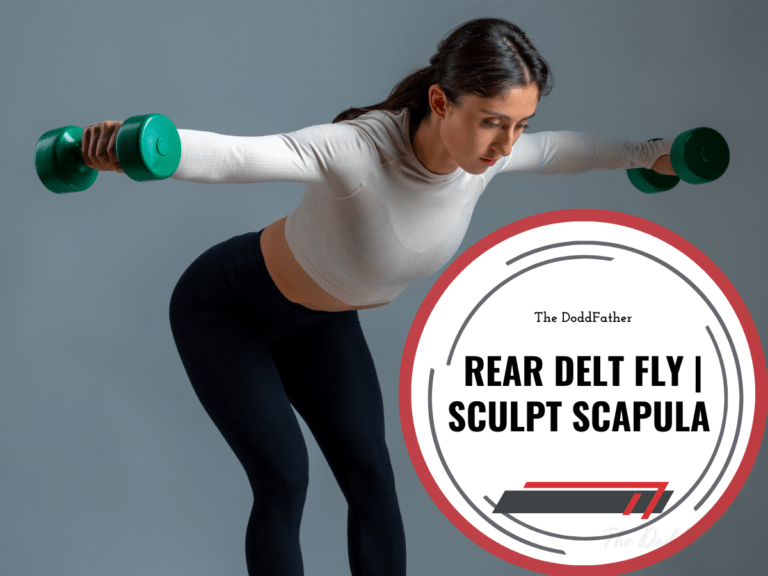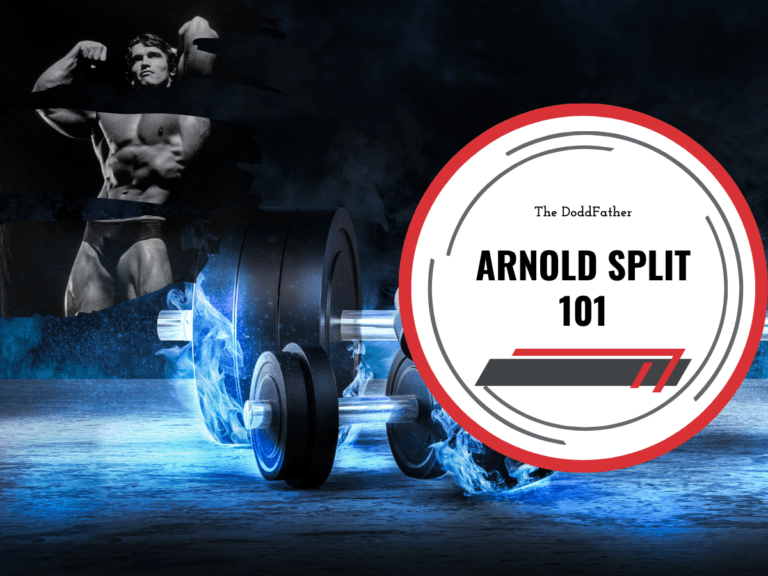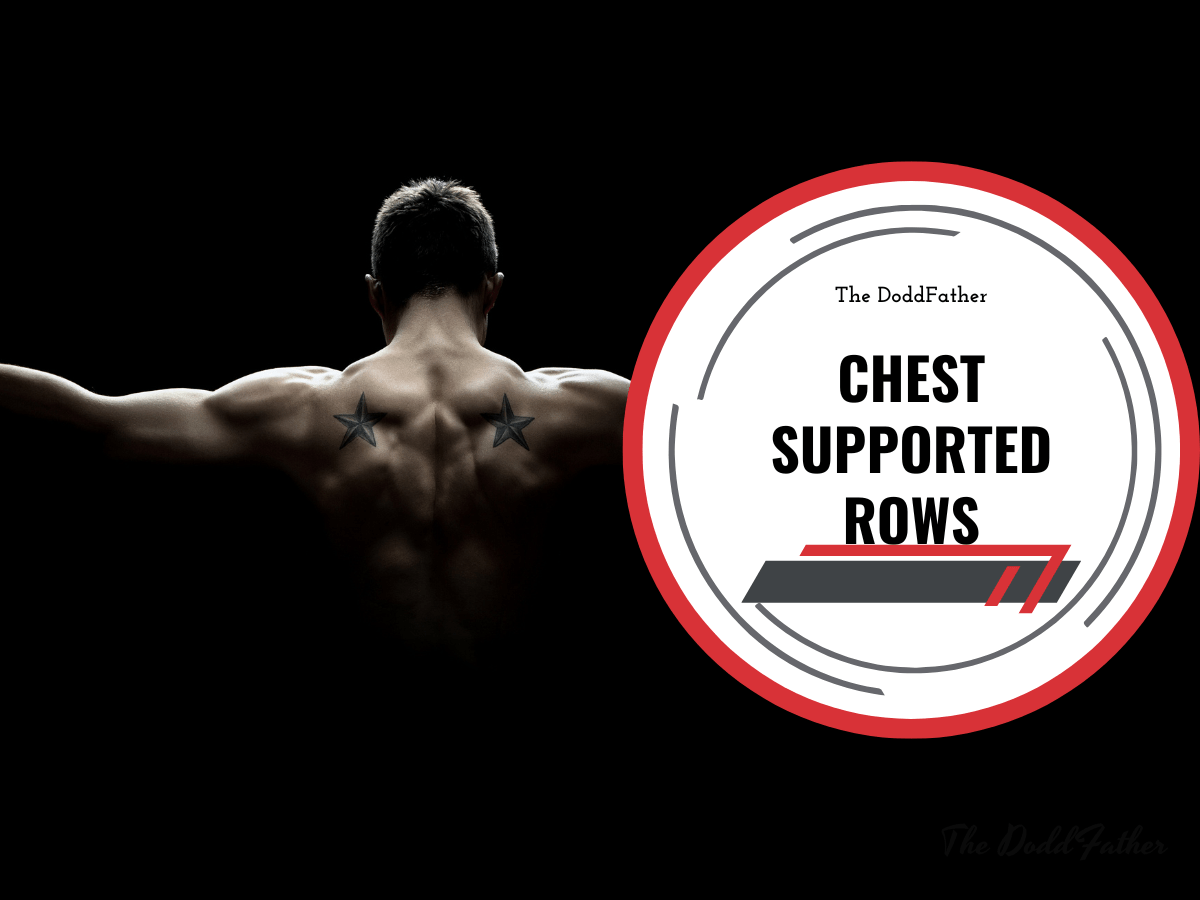
Cody Dodd is a NASM-certified personal trainer and Navy Command Fitness Leader who uses his fitness expertise to write fitness content for The DoddFather. Cody has transformed his physique and confidence by understanding the principles of exercise and fitness.
It all started with a radical fat loss of 55 pounds. From 225 to 170. From a kid who once couldn’t do a pull up, to knocking out 20 pullups in a Navy command competition while floating in the middle of the ocean.
He has a diverse writing and editing background that’s primarily focused on health and fitness, Navy life, and dad life. His work has been featured in Good Dads, as well as Platform Launchers, and Daddying.
The chest supported row is a great exercise. It helps to build a stronger and more defined upper body. Unlike traditional barbell rows, this exercise offers support that reduces strain on the lower back. This makes it a good choice for people at any fitness level.
When you do it with proper form, the chest supported row really targets important muscles in your back, shoulders, and arms. Hello bigger biceps!
If you’d like to see countless variations of the row movement, check out this comprehensive guide from Garage Gym Reviews.
- The chest supported row is a highly effective exercise for strengthening the upper back muscles while minimizing strain on the lower back.
- This exercise primarily targets the latissimus dorsi, rhomboids, trapezius, and rear deltoids, contributing to a wider and stronger back.
- It promotes better posture by strengthening the muscles responsible for pulling the shoulders back and maintaining a neutral spine.
- The chest supported row offers versatility with variations such as dumbbell rows, T-bar rows, and machine rows to target specific muscle groups.
- This exercise is suitable for various fitness levels and can be easily adjusted by modifying the weight, reps, and sets.
Understanding the Chest Supported Row
The chest supported row is a great workout because it helps many back muscles at the same time. When you lie face down on an incline bench, your body is in a fixed position. This helps you move your arms better and reduces the chance of lower back issues that can happen with regular bent-over rows.
Using an incline bench keeps the focus on the back muscles and does not put pressure on the lower back. This way, you can lift heavier weights safely. If you want to fix your posture, boost your sports skills, or just make your back stronger, the chest supported row is a great exercise to add to your workout routine!
What Makes the Chest Supported Row Unique?
The chest supported row is great because it effectively works specific muscles with less strain on other parts of your body. This happens because you start in a unique position on the incline bench.
Unlike regular rows that need you to bend over, the chest supported row does not require you to engage your core. This helps you focus better on your back muscles.
You can change the angle of the incline bench to target different muscle groups. For example, a higher angle helps work the upper back and rear delts more. A lower angle focuses on the lower traps and lats.
Key Muscles Targeted During the Exercise
The chest supported row works well for the upper back. It focuses mainly on the latissimus dorsi, or “lats.” These are the big muscles that help create the V-shape of your back, aka your wings.
This exercise also uses the trapezius muscles. These muscles go from your neck to the middle of your back. It also targets the rhomboids, which are found between your shoulder blades.
Working these muscles helps make your back wider, stronger, and more defined. This can improve your posture and boost the strength of your upper body. Strengthening the rear delts, found on the back of your shoulders, is important too. It helps keep your shoulders healthy and stable, especially when doing pulling movements.
The Comprehensive Guide to Performing the Chest Supported Row
Doing the chest supported row the right way is very important. It helps you get the most out of the exercise and avoid injuries. The move itself is not hard, but focusing on proper form is crucial.
Keep reading to learn the steps to do the chest supported row correctly. This way, you can safely and effectively work the muscle groups you want to target.
Setting Up for Success: Bench Angle and Weight Placement
Before starting the chest supported row, it’s important to set up correctly. First, adjust the weight bench to a 30-45 degree incline. This angle helps to target the right muscles without putting too much strain on your shoulders. You should feel supported by the bench while keeping tension in your back.
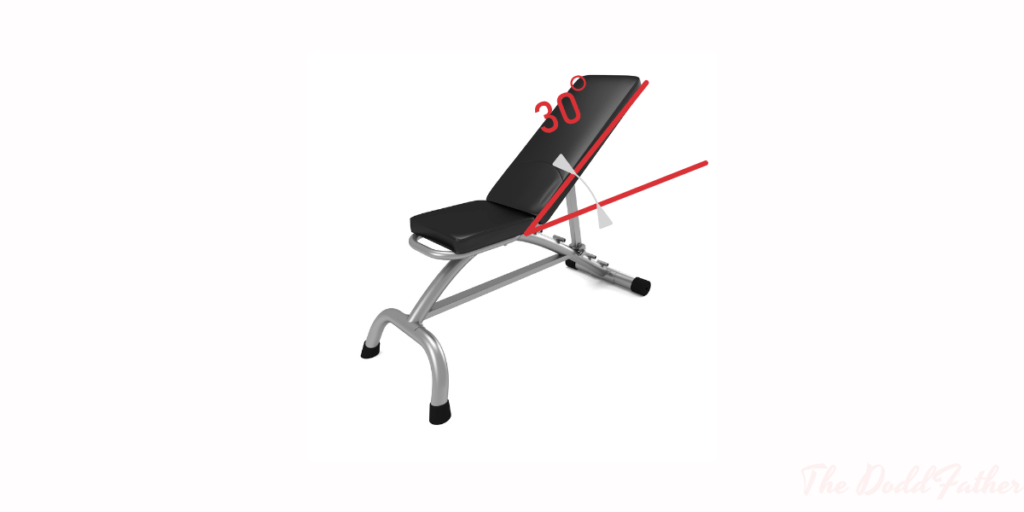
Then, pick a weight that suits your fitness level. Make sure you keep good form during the exercise. When you perform the dumbbell row, use a neutral grip. This means your palms should face each other, which helps reduce stress on your wrists and elbows.
Here’s a simple setup guide:
- Bench Angle: Adjust to a 30-45 degree incline.
- Weight Selection: Pick a weight that challenges you but allows for proper form.
- Grip: Use a neutral grip with palms facing each other for the dumbbell row.
Step-by-Step Instructions for Perfect Form
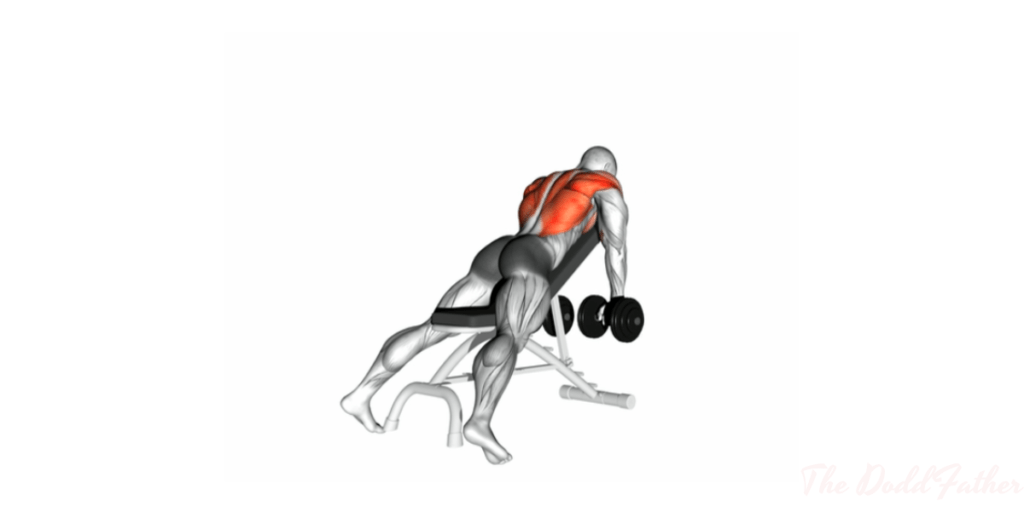
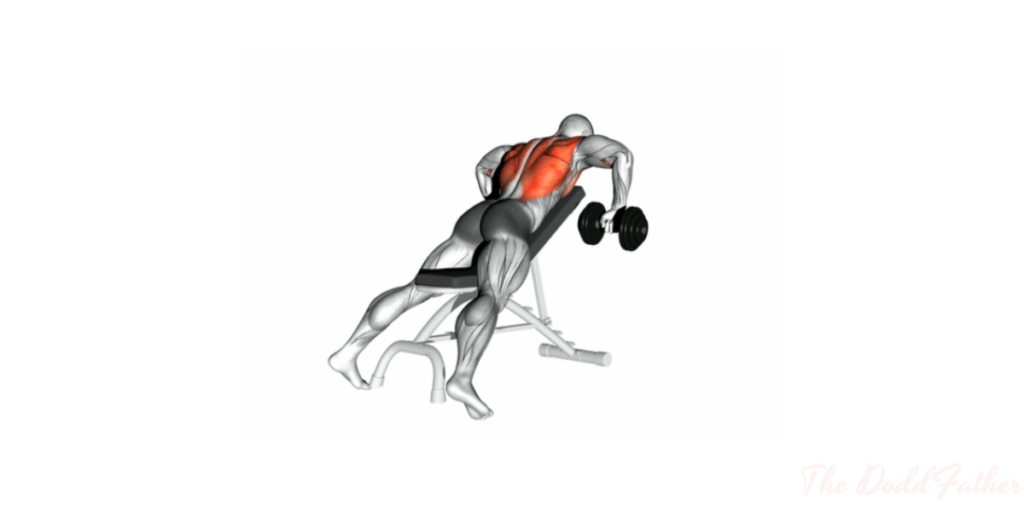

Common Pitfalls and How to Avoid Them
While the chest supported row is usually safe, it is important to know about common mistakes to lower the risk of injury.
- Using too much weight – This can cause bad form and put a strain on your shoulders. Remember, it’s not just about lifting the heaviest weight. It is more about using the right muscles properly.
- Not controlling your movement – Pulling the weight up too quickly or dropping it fast can hurt your joints. Each repetition should be done slowly and carefully.
By focusing on proper form and using a weight you can handle throughout the exercise, you make the chest supported row more effective. Thereby reducing your chance of strain or injury.
Elevating Your Workout: Variations of the Chest Supported Row
Once you know how to do the basic chest supported row, try adding some different styles to your workout. Doing this will challenge your muscles and stop you from reaching a plateau in your progress. Each style targets muscles in new ways.
No matter if you are experienced or just starting out, there is a style that can help you meet your fitness goals. Let’s look at some well-known and useful styles of the chest supported row!
Utilizing Dumbbells for Greater Range of Motion
One popular way to perform this exercise is the chest supported dumbbell row. In this version, you use a pair of dumbbells instead of a barbell. This change allows for a better range of motion and helps each arm move on its own.
Using dumbbells helps your stabilizing muscles. This promotes good muscle development. They also let your hands rotate naturally inwards while pulling, which may help increase your muscle mass over time.
This version is great for people who want to fix muscle imbalances or improve strength on one side of their body. By working each arm separately, you make sure both sides are equally strong and developed.
Incorporating Single-Arm Rows for Unilateral Strength
The single-arm dumbbell row builds on the chest supported dumbbell row. It takes one-sided training to new heights. This exercise works one side of the body at a time by allowing you to train in a proprioceptive-enriched environment. You need to engage your core more to stay stable.
Adding single-arm rows to your routine is not just for specific goals. It greatly helps with muscle growth and strength. The wobbliness makes you focus more, working on your stabilizing muscles and helping you keep proper form.
When you switch sides for each rep, you create a natural twist in your upper body. This twist also boosts your core strength and stability. If you worry about your lower back, this exercise is especially helpful.
Transitioning to T-Bar Rows for Increased Intensity
The T-bar row is a great way to make your chest supported rows harder. It has a special T-bar setup with weight plates added to it. You usually do this exercise in a power rack. The rack gives you more stability and lets you lift heavier loads.
The T-bar row has a fixed range of motion. This means you can move the same way every time, so you don’t sway or use momentum to lift the weight. This helps your muscles work better and puts less stress on your lower back.
You can change the weight to fit your fitness level. You can also adjust your grip width to focus on different muscle groups. If you don’t have a T-bar, you can try a chest supported cable row on a cable machine. It offers a similar type of workout.
Advancing Your Routine: Tips for Maximizing Benefits
To get the best results from your chest supported rows, think about ways to overcome training limits and boost your gains. It is important to keep challenging your muscles to help them grow.
Let’s discuss some helpful tips to get the most from chest supported rows!
Frequency and Volume: Finding Your Optimal Workout Balance
The amount and how often you do chest supported rows depend on your training program and goals. If you are new to this exercise, try starting with 2-3 sets of 8-12 repetitions two times a week. This is a good place to begin. As you lift heavier weights, you will see strength gains.
If you want to make your muscles bigger, think about doing more sets, repetitions, or training days. Pay attention to how your body feels. Change your training program based on how well you are recovering and making progress.
Don’t forget that rest is as important as working out. Your muscles need time to heal and grow after a tough workout. Aim for at least 48 hours of rest before working the same muscle group again.
Combining Rows with Complementary Exercises for Balanced Growth
Creating a good back routine includes more than just doing chest supported rows. To help all your muscles grow well, combine this back exercise with other movements. Choose exercises that work different muscles and come from various angles. This way, you stop muscle imbalances and make sure you train all major muscle groups.
Add pulling exercises like lat pull-downs, pull-ups, and seated cable rows. These exercises hit the back from different angles and help your body become more balanced.
Also, having a strong core is very important for keeping good form in your back exercises. By adding core workouts like planks, crunches, and Russian twists to your routine, you can support your spine. This improves how well your back exercises work and lowers the risk of injury.
Adjustments for Different Fitness Levels
Adjusting the chest supported row for different fitness levels is important. This makes sure everyone has a safe and effective workout. Beginners should start with a lighter weight and focus on getting the proper form right. As you get stronger and more confident, you can slowly increase the weight or resistance.
For intermediate and advanced people, you can change the exercise by using heavier weights, adding more sets and reps, or trying harder variations. You might also use techniques like drop sets and supersets to make your workouts tougher. No matter your fitness level, always focus on proper form.
Pay attention to your body. Change the weight, reps, or variations according to what you can do and your fitness goals. If you’re unsure, ask a certified fitness professional for personal advice and exercise adjustments.
Conclusion
Mastering the chest supported row can greatly improve your back strength and overall fitness. This exercise targets important muscles well, especially when you use proper form. Adding different variations can take your workouts to the next level.
It is important to adjust how often and how much you exercise based on your fitness level to get the best results. Always focus on safety. Make sure to place weights correctly and set the bench at the right angle to avoid injuries.
The chest supported row is a good exercise choice for both beginners and advanced lifters. Try different variations and enjoy the many benefits of this great exercise!
Frequently Asked Questions
Can Chest Supported Rows Replace Traditional Rows?
Chest supported rows are a great exercise for your back. However, they should not take the place of all other types of rows. Exercises like the seated cable row, barbell row, and smith machine row work different muscles that help keep the body stable. Each of these exercises helps in building a strong back.
Optimal Weight Selection for Beginners vs. Advanced Lifters
Beginners should focus on using proper form instead of lifting heavy weights. Start with a weight that lets you do 8 to 12 controlled repetitions. Advanced lifters can lift heavier weights, but they must keep proper form throughout the exercise.
The Role of the Chest Supported Row in Back Development
Chest supported rows work on different back muscles. These include the latissimus dorsi, rhomboids, upper trapezius, and lower trapezius. Doing this exercise can help make your back thicker, wider, and stronger.
Tips for Overcoming Plateaus with the Chest Supported Row
To make your workout day more challenging, try changing things up. You can vary your exercises, increase the weight or resistance, or add extra sets and repetitions. Doing this in your strength training routine helps your muscles keep growing and stops you from hitting a plateau in your progress.
Safety Considerations and Injury Prevention
To lower the risk of injury during the chest supported row, focus on using proper form. Choose a weight that is suitable for you, and make sure not to arch your back too much. Keeping good posture all day can help stop muscle imbalances and support your spinal health.
How Often Should I Include Chest Supported Rows in My Workout Routine?
The best frequency for chest supported rows depends on your workout plan and fitness goals. A good starting point is to do this back exercise 1 to 2 times each week. Make sure to rest enough between sessions. Pairing this exercise with other workouts that target different muscle groups and boost core strength will help you create a complete workout plan.

